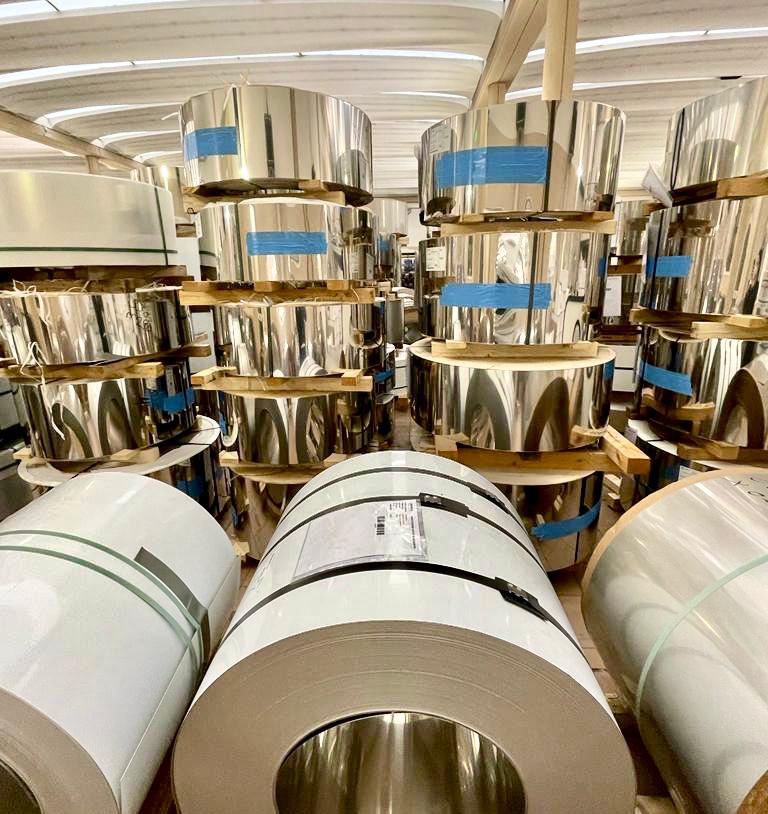NEUHEITEN

TRACEABILITY APPLIED TO STAINLESS STEEL FCM
Regulation (EC) No 1935/2004 was established in response to the need to harmonise at European level the legislation concerning materials and articles intended to come into contact directly or indirectly with food (FCM) in order to ensure a high level of protection of health and consumers‘ interests.
Article 2 of the Framework Regulation clarifies to economic operators that produce or sell FCM that „traceability“ means the ability to trace and follow a material or article through all stages of manufacture, processing and distribution. In concrete terms, it means that every actor in the production chain, starting from the supplier of raw materials up to the retailer, has the obligation to have systems, procedures and documentation in place that allow the identification of the companies from which and to which the materials and objects have been supplied (Art. 17).
TRACEABILITY STARTS FROM THE RAW MATERIAL:
INSPECTION DOCUMENTS
Traceability therefore starts upstream, right at the heart of the steel mill.
The standard EN 10204:2005 „Metal products – Types of control documents“[1] specifies the different types of inspection documents provided to the customer, according to the requirements of the order, for the delivery of metal products such as plates, sheets, bars, forgings, castings, regardless of their production method.
Through the inspection documents, the manufacturer provides guarantees that the product meets the technical requirements as laid down in the order. The standard itself also refers to EN 10168 for the specific contents of the inspection documents for steel products, in addition to the product specifications.
The documents may be drawn up on the basis of a non-specific or specific check.
In the first case, the inspection is carried out by the manufacturer on the basis of his own internal procedures using a sample of product which does not necessarily correspond to the batch supplied. To this category belong the Declaration of Conformity to the order „type 2.1“ and the Test Report „type 2.2“.
In the second case, the manufacturer carries out the check prior to delivery on the batch actually supplied in accordance with the product specification. To this category belong the „type 3.1“ inspection certificate, which must be validated by the manufacturer’s representative authorised for inspection, and the „type 3.2“ inspection certificate, which tends to be used in the case of special requirements and is prepared in synergy by the manufacturer’s representative and the principal’s representative authorised for inspection or, alternatively, by the inspector designated by official regulations.
Regardless of the type, the inspection document must contain the declaration of conformity to the order, which binds the manufacturer to comply with the contract even if the chemical and mechanical values are not explicitly stated.
In order to ensure traceability along the supply chain, the intermediary has the duty to pass on to his customers an original or a copy of the inspection documents provided by the manufacturer without altering them in any way.
Finally, the customer is obliged to request and keep the inspection documents relating to each supply.
MORI 2A GUARANTEES TRACEABILITY AND INSPECTION OF STAINLESS STEEL
Within our production process we use a structured and effective Quality Management System: our suppliers are required, through the document „Supply specifications – raw material steel“, to provide for each batch of each order the Control Certificate „type 3.1“ correctly drawn up according to EN 10204:2005.
[1]The standard must be used in association with product specifications such as, for example, EN 10088-2, EN 10088-3, EN 10217-7 and others.